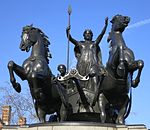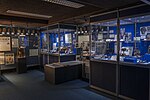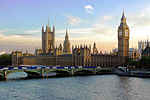Westminster Millennium Pier
Buildings and structures celebrating the third millenniumLondon River ServicesLondon building and structure stubsLondon transport stubsPiers in London ... and 3 more
Transport in the City of WestminsterUse British English from March 2017Victoria Embankment

Westminster Millennium Pier is a pier on the River Thames, in the City of Westminster in London, UK. It is operated by London River Services and served by various river transport and cruise operators. It is located next to Westminster Bridge on the north bank of the Thames, and is close to one of London's most prominent landmarks, Big Ben.
Excerpt from the Wikipedia article Westminster Millennium Pier (License: CC BY-SA 3.0, Authors, Images).Westminster Millennium Pier
Victoria Embankment, City of Westminster Covent Garden
Geographical coordinates (GPS) Address External links Nearby Places Show on map
Geographical coordinates (GPS)
| Latitude | Longitude |
|---|---|
| N 51.501901 ° | E -0.123223 ° |
Address
Westminster Pier (Westminster Millennium Pier)
Victoria Embankment
SW1A 2JH City of Westminster, Covent Garden
England, United Kingdom
Open on Google Maps











